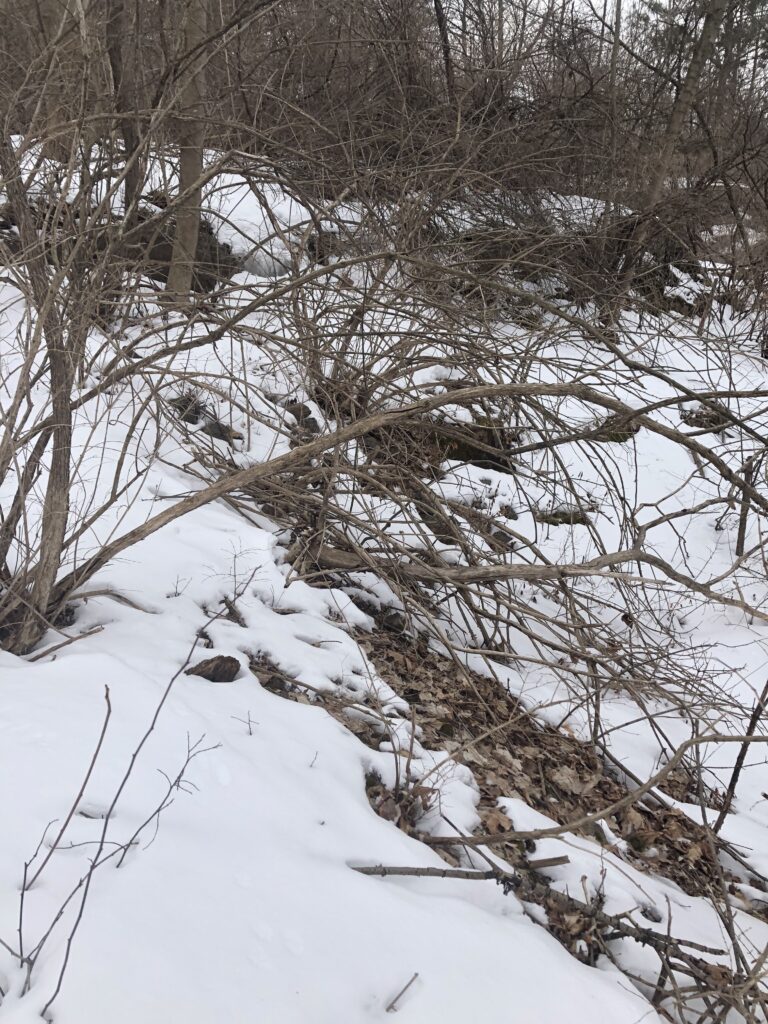I visited my phenology site today! It was about 18 degrees Fahrenheit and cloudy. Right before I went it snowed a bit, but it wasn’t snowing by 4 PM. The first new thing that I noticed when I got to my phenology site (and on the way there) was that the snow cover had decreased since I had last been there. The snow was more compact, and there was a layer of ice under spots of it. Although the ground was mostly covered in snow, more vegetation was peaking through. On some of the less dramatic hills on my way through the woods to my phenology site, the snow was kind of washed out and there were leaves showing. Under one of the bridges/walkways I noticed that there was almost no snow, and it looked like there was water (possibly ice) in a puddle. I wasn’t able to get to the substrate around it, but it was definitely washed out looking as it disappeared under the walkway and into the puddle. I also noticed a lot of tracks in the snow, but most of them appeared to just be dog tracks, which makes sense with Redstone Quarry being in a neighborhood.


Redstone Quarry is an area that has seen a lot of human activity in the past (as it does now). Historically a quarry, the Monkton Quartizte (or Redstone) was used to build many of the building here on campus. The area was used for highly industrial purposes for a long time, which resulted in the current natural community of the quarry looking very different than what the ecological potential was. Not only does the past human activity make it hard to decipher the past ecological potential, but the current activity surrounding the quarry does, too. Redstone Quarry is surrounded by a neighborhood, private properties running right into the natural area. Neighboring plants from private properties spill right over into the natural area. But there are still ways to hypothesize about the ecological potential of Redstone Quarry. My phenology site is closer to the north end of the quarry, bordering close to the woods. The woods in the north are possibly a good indicator that Redstone Quarry is part of a now fragmented northern hardwood forest. Although many of the trees are still young, there are maples in the area and I counted a couple American beech trees. Both of these trees are present in northern hardwood forests. There are more sugar maples popping up around the quarry (not just at my site), too. This could possibly mean that the past ecological potential of the place is starting to pop up again, even after all of the human activity.

After visiting my phenology site, I was curious to see if I could find out any more information using Burlington Geographic. I was able to confirm (to an extent) by looking at where the bedrock geology (quartzes, metasandstone, quartzite, quartz granofels and quartzose gneiss; calcareous) and the surgical geology that it is likely that my phenology spot on the edge of Redstone Quarry has a similar ecological potential as the woods just to the north of it (as pictured above).


Recent Comments